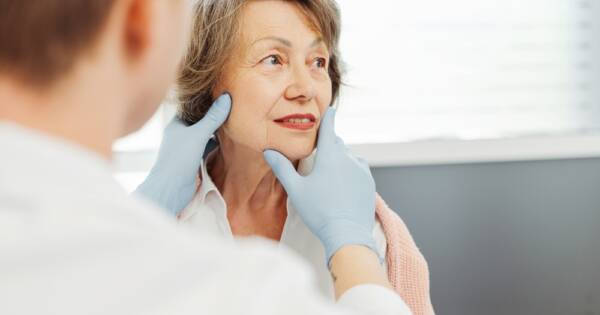Breast cancer is one of the most common cancers affecting women worldwide, but it can also occur in men, though at a much lower frequency. Breast cancer is a significant health concern, and recognizing its early signs can improve outcomes. Explore the symptoms you should watch for, emphasizing the importance of being informed and vigilant for early detection.
Types of Breast Cancer
Breast cancer is not a single disease but rather a collection of related cancers that begin in the cells of the breast. The two main types of breast cancer are:
- Ductal Carcinoma In Situ (DCIS): This is a non-invasive form of breast cancer where abnormal cells are found in the milk ducts but have not spread outside the ducts into other parts of the breast tissue. While DCIS is not considered life-threatening, it can increase the risk of developing invasive breast cancer later on.
- Invasive Ductal Carcinoma (IDC): IDC is the most common type of breast cancer. It begins in the milk ducts but spreads beyond them into surrounding tissue. IDC can invade the lymph nodes and other parts of the body, making early detection and treatment crucial.
There are other types of breast cancer as well, including invasive lobular carcinoma (ILC), inflammatory breast cancer, and triple-negative breast cancer, each with unique characteristics and treatment challenges.
Symptoms of Breast Cancer
Early detection of breast cancer can significantly improve outcomes. While some women may not experience symptoms, others may notice changes in their breasts that warrant further investigation. Common symptoms of breast cancer include:
- A lump in the breast or underarm: A painless or painful lump that feels different from the surrounding tissue.
- Change in the size or shape of the breast: Noticeable asymmetry or swelling.
- Skin changes: Redness, dimpling, or puckering of the skin on the breast.
- Nipple discharge: Unexplained discharge or bleeding from the nipple.
- Pain: Persistent or unexplained pain in the breast or nipple.
It’s important to note that these symptoms do not necessarily indicate breast cancer, as they can be caused by benign conditions. However, any unusual changes should be reported to a healthcare provider for further evaluation.
Risk Factors for Breast Cancer
While the exact cause of breast cancer remains unclear, several risk factors have been identified that can increase the likelihood of developing the disease. These include:
- Gender: Women are much more likely to develop breast cancer than men, though men can still get breast cancer.
- Age: The risk increases as a person gets older, with most cases diagnosed in women over the age of 50.
- Family history: Having a close relative (mother, sister, daughter) with breast cancer increases your risk.
- Genetic mutations: Inherited mutations in genes such as BRCA1 and BRCA2 significantly increase the risk of breast cancer.
- Hormonal factors: Early menstruation (before age 12), late menopause (after age 55), or hormone replacement therapy (HRT) use may increase risk.
- Lifestyle factors: Alcohol consumption, lack of physical activity, and obesity are associated with an increased risk of developing breast cancer.
Diagnostic Methods
Breast cancer can be detected through several methods, including:
- Mammography: A low-dose X-ray of the breast is the most common screening method for detecting breast cancer, especially in women over the age of 40. Mammograms can identify abnormalities before symptoms appear.
- Ultrasound: An ultrasound may be used to further examine areas of concern identified on a mammogram. It helps differentiate between solid masses and fluid-filled cysts.
- Biopsy: If an abnormality is found, a biopsy may be performed to remove a small sample of tissue for examination. This is the only definitive way to diagnose cancer.
- Magnetic Resonance Imaging (MRI): An MRI may be used in certain cases to get a more detailed image of the breast tissue.
Treatment Options for Breast Cancer
Treatment for breast cancer depends on the type and stage of the disease, as well as the individual’s overall health. Common treatment options include:
- Surgery: Surgical options range from breast-conserving surgery (lumpectomy) to mastectomy, where the entire breast is removed. In some cases, lymph nodes are also removed for testing.
- Radiation therapy: Radiation uses high-energy rays to target and kill cancer cells. It is often used after surgery to eliminate any remaining cancer cells.
- Chemotherapy: Chemotherapy involves the use of drugs to destroy cancer cells or stop their growth. It can be given before surgery to shrink tumors or after surgery to reduce the risk of recurrence.
- Hormone therapy: Hormone therapy is used for cancers that are hormone-receptor-positive. It works by blocking hormones like estrogen, which can promote the growth of cancer cells.
- Targeted therapy: Targeted therapies focus on specific molecules involved in the growth of cancer cells. They aim to kill cancer cells while minimizing damage to normal cells.
- Immunotherapy: Immunotherapy helps boost the body’s immune system to fight cancer. It is often used for certain types of breast cancer, like triple-negative breast cancer.
Early Detection and Advances in Treatment Offer Hope for Breast Cancer Patients
Breast cancer is a complex disease, but advances in detection and treatment have made it possible to manage and even overcome it. With regular screenings, understanding risk factors, and recognizing symptoms, individuals can take steps to detect breast cancer early and improve the chances of successful treatment. Whether through surgery, chemotherapy, radiation, or emerging therapies, there are numerous options available for patients diagnosed with breast cancer. If you notice any changes in your breasts or have concerns about your risk, it’s important to consult with a healthcare provider for proper evaluation and guidance. With continued research and awareness, breast cancer survival rates continue to improve, offering hope for a brighter future.





